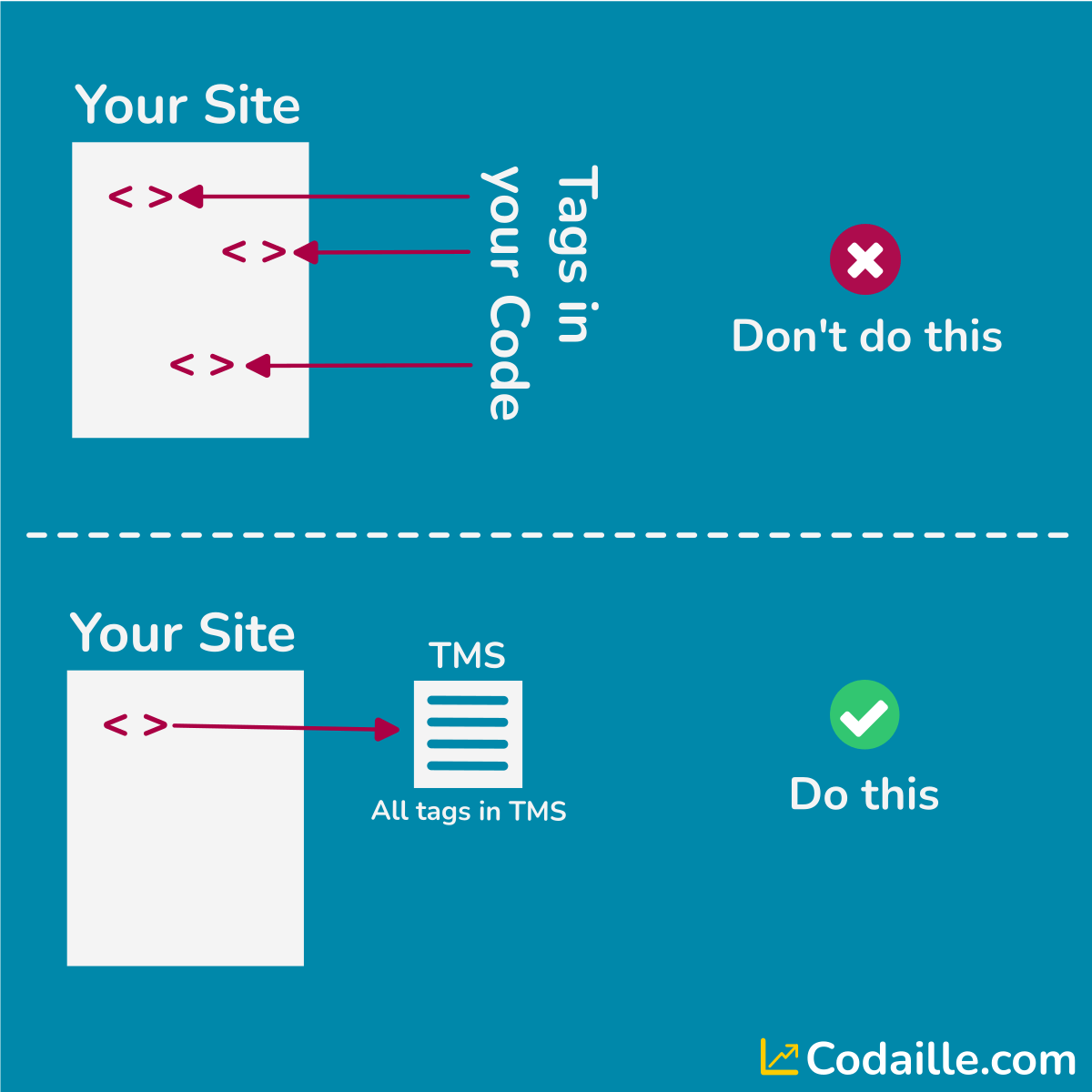In another article, we saw how Tag Management Systems (TMS) work. But is using a TMS really worth it ? What are the advantages of such a tool?
Here are 5 good reasons to use a Tag Management System for your web and mobile projects.

1. A Tag Management System clearly separates application development and marketing tags management
Developing and maintaining a website or an application is already a complicated endeavour. If, to top it off, you have to add tags everywhere in the source code of your application, it becomes downright tedious. If you have to add many different tags for several suppliers, with multiple events, it's a real headache. Using a TMS solves this problem, by clearly separating concerns between your application on one side, and the marketing tags on the other. Analytics and web teams no longer need to step on each other's toes. Analytics teams can manage tags independently. The TMS is here to simplify this work.
2. A TMS simplifies the deployment and maintenance of marketing tags
Once the TMS tag is added to your application, you can manage your tags with little or no code. From the TMS interface, you can add or remove tags without asking for a developer's assistance.
You can also manage much more complex behaviors, with the datalayer.
3. A TMS enables event management thanks to the datalayer
TMS also allows you to control how tags trigger. The flow of data to analytics and marketing systems can be controlled in detail with the datalayer.
With a Tag Management System, you can do all this freely, with little to no code.
4. A Tag Management System allows you to manage cookies and comply with privacy laws
In a TMS all your tags are controlled in the same place. You can configure trigger constraints to comply with privacy laws. In other words, you can prevent certain tags from firing if the user hasn't given their consent for it.
There are several levels of consent, and you can group your tags by level, and make sure that your users' wishes are respected. It's much harder to do this in the source code!
5. A TMS allows you to put all your tags on the server side
The world of web analytics is changing:
- we are moving more and more towards a cookieless world
- browsers are increasing their security constraints more and more (a very good thing)
- most users interact with the same application on several devices now, and therefore it's necessary to trace their journey across several devices
To prepare for these changes, many are moving to server-side tagging. Fortunately, a TMS can simplify this transition. Since all tags are already managed from the same place, they can all be moved to a server system in one go. This is also a feature already offered by most Tag Management Systems.
I hope you now understand why TMS is an essential tool in your martech arsenal. Happy tagging!

